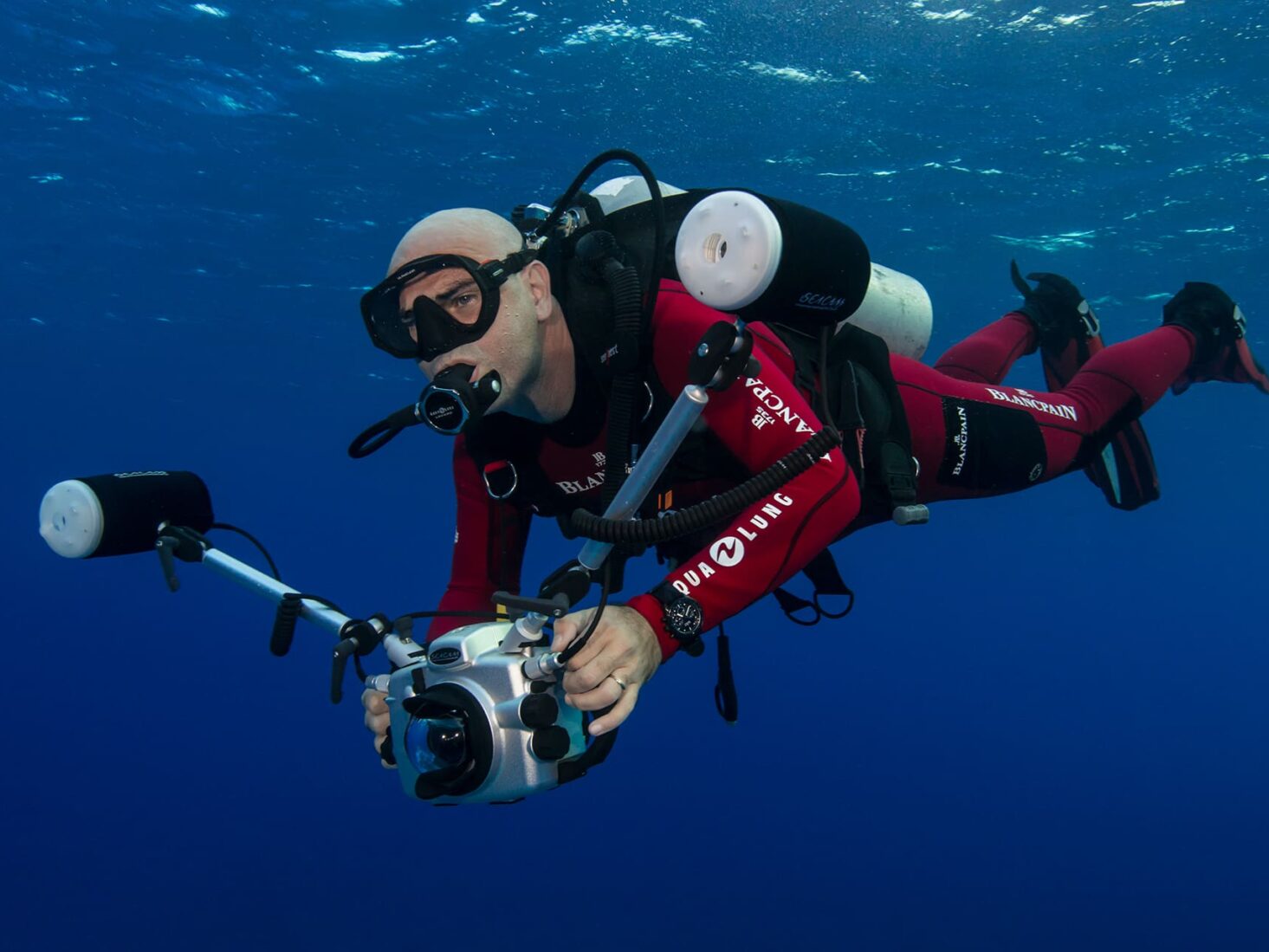
Big fish, big pond: The story of the legendary Blancpain Fifty Fathoms dive watch
In 1953, Blancpain released a timepiece that laid down the design codes of an entire watch genre. Seventy years on, the Fifty Fathoms continues to act as a crib sheet for any proper dive watch
Here’s the story. In the early 1950s an elite team of French combat divers were looking for a watch that could withstand the pressures of deep-sea diving. The kit we now know as ‘Scuba’ equipment – that is, Self-Contained Underwater Breathing Apparatus – had just been patented and divers could now descend to far greater depths, staying underwater for much longer periods of time.
There had, watchmakers’ archives tell us, been waterproof watches prior to the 1950s. During the ’20s and ’30s, Rolex, Cartier, Omega and Panerai had all come up with nifty ways of keeping water out of watches, mainly through the use of clever crowns and cases. Yet, to all intents and purposes, these were dress watches you could take for a swim. Nothing had been designed explicitly for exploring the depths of the oceans.
Unable to find a timepiece up to the job, the captain of the diving unit, Robert ‘Bob’ Maloubier – a French secret service agent who’d spent the Second World War blowing up Nazi power stations – sketched the sort of thing he and his frogmen were after.
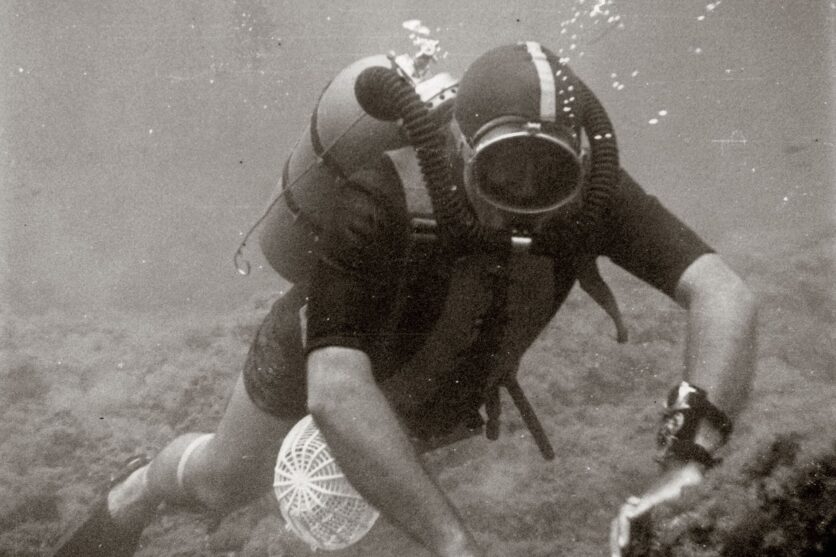
Having approached several big-name Swiss watchmakers, Maloubier was introduced to Jean-Jacques Fiechter, co-CEO of a then-periphery outfit called Blancpain. A signed-up member of the world’s first diving club – the Club Alpin Sous-Marin in Cannes – Fiechter was a keen diver himself. “Finally there was a small watch company that agreed to develop our project,” Maloubier, who died in 2015 aged 92, would later recall.
Maloubier’s sketch outlined a watch with a black dial, large numerals, clear indices and a rotating bezel that mirrored minute markers on the dial. “We wanted at the beginning of a dive to position the bezel opposite the minute hand so as to be able to read the elapsed time,” he said. “We wanted in effect that each of the markers be as clear as a guiding star for a shepherd.”
Fiechter, who had cheated death by mistiming one of his own dives, studied Maloubier’s brief and came up with something called the ‘Fifty Fathoms’. Delivered in a 42mm stainless steel case – a whopper by the standards of the day – the timepiece featured a rotating Bakelite bezel and a self-winding movement. The name referred to the depth to which divers could safely descend at the time (around 91 metres) and alluded, it has been posited, to a line from Shakespeare’s The Tempest. ‘Full fathom five thy father lies,’ says Ariel, revealing to Prince Ferdinand that his father, the King of Naples, has gone down with a shipwreck (not, you might argue, the most auspicious of names for a dive watch).
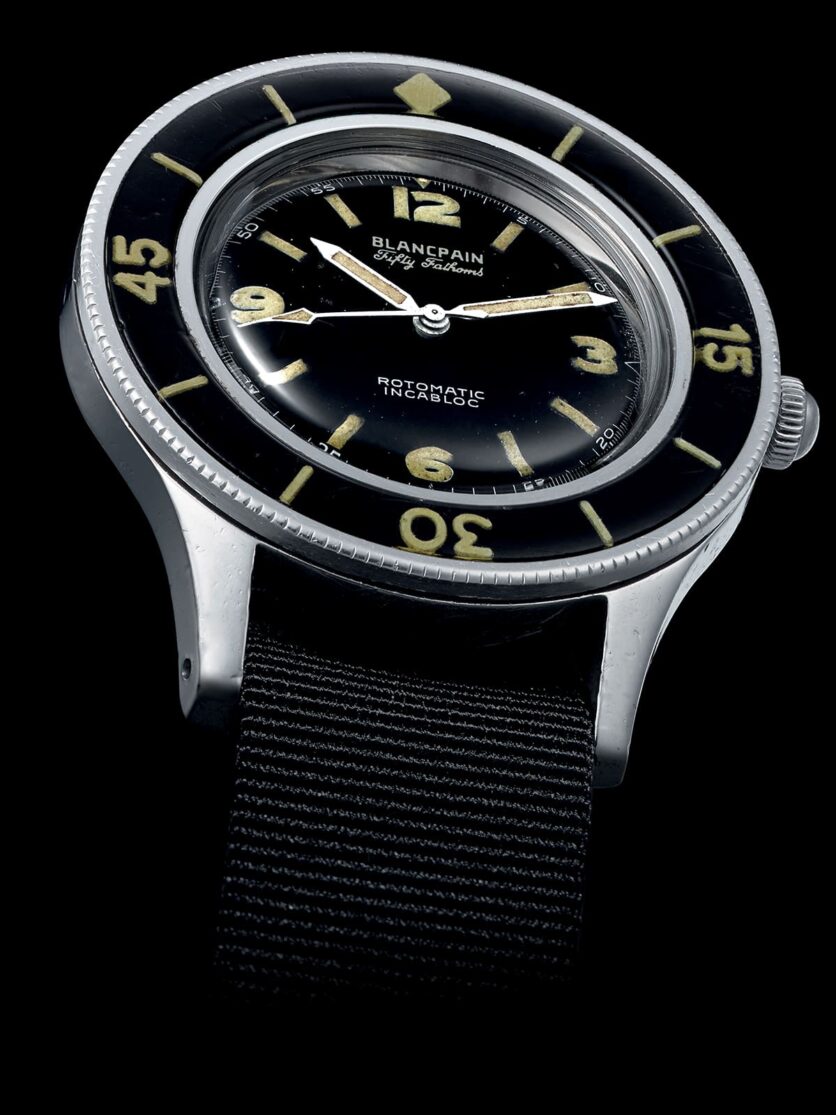
The first Fifty Fathoms were delivered to Maloubier’s unit in 1953 (Rolex’s Submariner, the other genre-defining dive watch, was developed in the same year but was only released in 1954). After testing, the watch was officially adopted by France’s Marine Nationale, followed by the navies of Germany, Norway and Israel. In 1959, having conducted its own trials, the U.S. Navy declared that the Fifty Fathoms was the only watch to pass its rigorous testing programme.
“In summary, experience with 12 Blancpain underwater watches during Operation HARDTACK yielded virtually complete satisfaction,” wrote the Americans. “No worthwhile suggestions for improvement of this watch can be offered.”
Unlike Panerai, whose dive watches were made exclusively for military divisions until 1993, Blancpain manufactured the Fifty Fathoms for both civilian and military markets. Production continued from 1953 until the mid-'70s, when, like many mechanical-focused watchmakers, Blancpain fell victim to the Quartz Crisis.
Revived by the swashbuckling efforts of Jean-Claude Biver in the '80s, Blancpain was sold to Swatch Group in 1992. It would be incoming CEO Marc A. Hayek, another avid scuba diver, who would resurrect the Fifty Fathoms, on occasion of the then-dormant dive watch’s 50th anniversary in 2003.
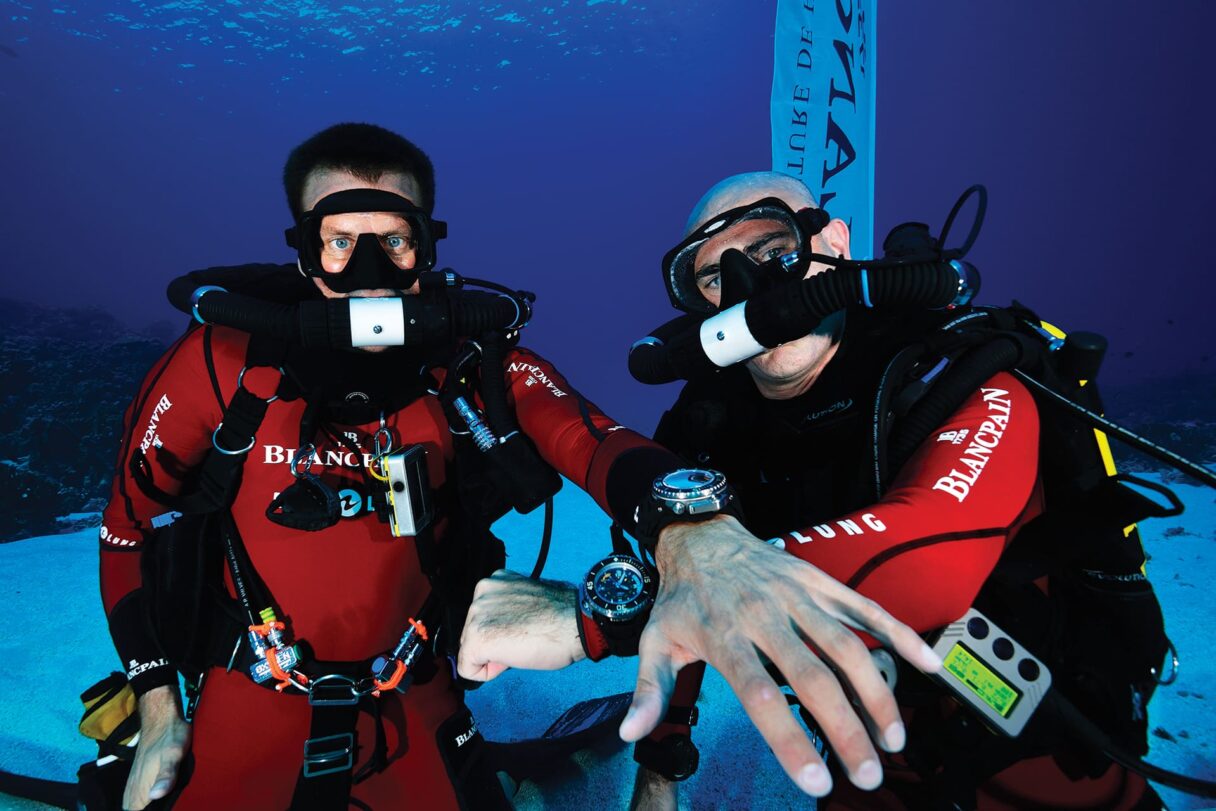
Released in three limited-edition runs of 50 watches, Hayek’s anniversary model landed in a 40mm case and was guaranteed to a depth of 300 metres. Each run sold out in the markets to which they were destined: Asia, Europe and North America. To toast the reissue, Hayek joined a then 80-year-old Maloubier for a dive off the coast of Thailand.
This year represented the Fifty Fathoms’ platinum jubilee, a milestone Blancpain marked with three new issues and a collaboration with Swatch. The Fifty Fathoms 70th Anniversary Act 1 arrived with a 42mm stainless steel case – the first modern Fifty Fathoms to be offered true to the size of the original – and a black NATO strap made from 100 per cent recycled fishing nets. Unlike the original, the watch boasts a five-day power reserve and a sapphire crystal case-back.
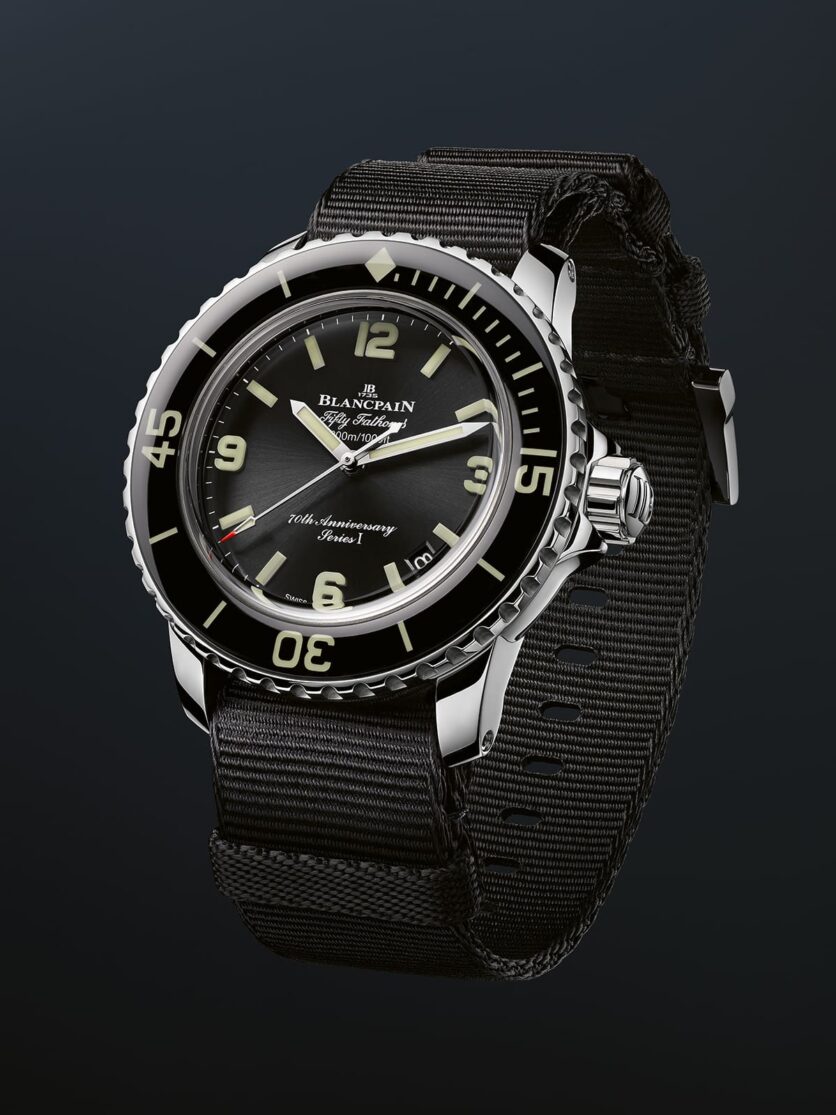
The second 2023 instalment – the 70th Anniversary Act 2: Tech Gombessa – was co-designed by Hayek and Laurent Ballesta, founder of marine research initiative, the Gombessa project. In order to study the behaviour of great hammerhead sharks, Ballesta’s team must stay submerged for up to three hours – a period of time that, until this year, was tricky to track on an analogue dive watch. The answer? A bezel with a three-hour scale and a hand that completes one turn every three hours – a watchmaking first.
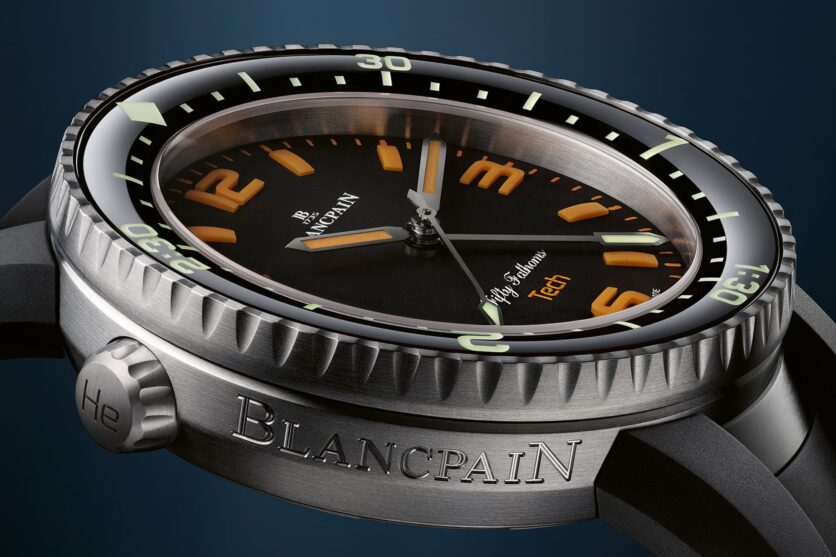
The Fifty Fathoms 70th Anniversary Act 3 pays tribute to one of the rarest and most sought-after of all Blancpain watches – the Fifty Fathoms MIL-SPEC. Launched in 1957, the watch sported a revolutionary moisture indicator – ensuring divers knew if the watch they were wearing had been compromised – and was the only model to meet the strict criteria laid down by the US Navy for its underwater missions. This year’s tribute is faithful to the watch’s original 41.30mm diameter, but is released in a 9 carat ‘bronze gold’ case.
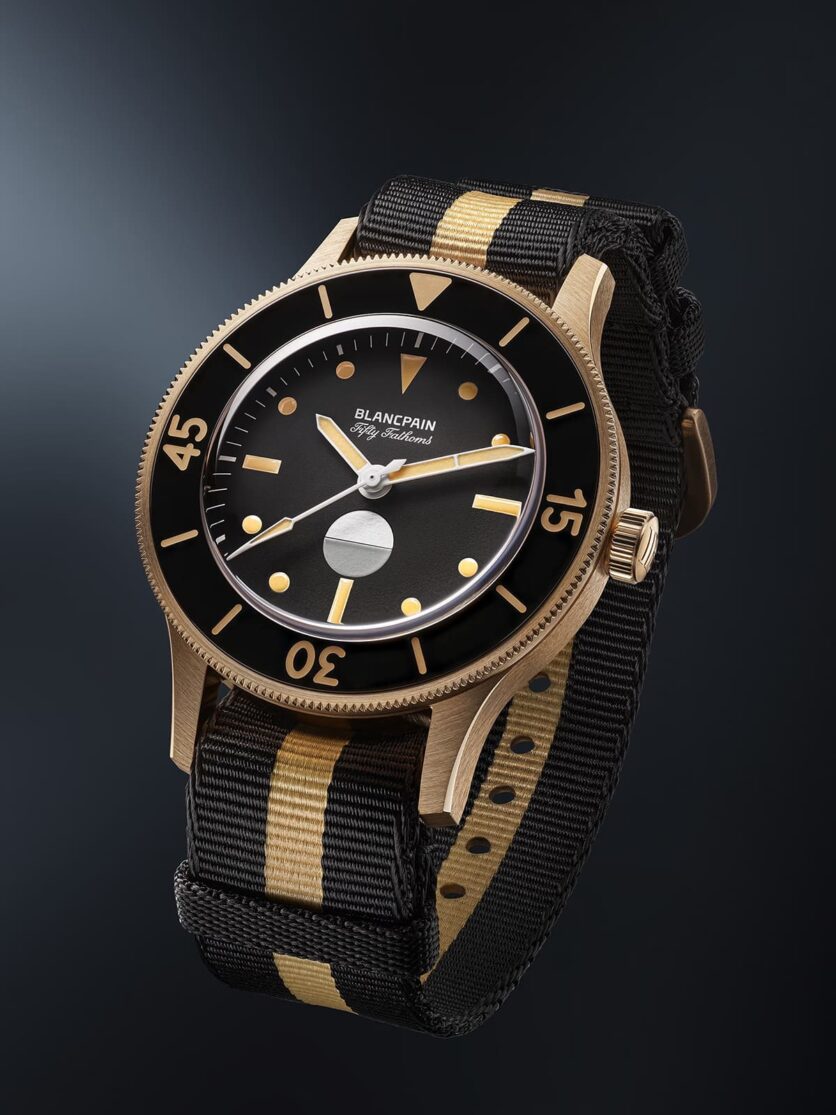
And then, of course, there was the collaboration with Swatch. 18 months after the quartz specialist had released the all-conquering MoonSwatch with Omega, the entry-level watchmaker finally revealed its much-teased tie-in with Blancpain. Rendered in Swatch’s propriety Bioceramic, the Scuba Fifty Fathoms, or ‘Scuba Fifty’, reinterpreted Blancpain’s legendary dive watch in a suite of five colour options, each named after a different ocean – and each available for just £340.

Unlike the MoonSwatch, the Scuba Fifty is powered by an automatic movement – Swatch’s stripped-back Sistem51. A savvy marketing move, the Scuba Fifty introduces a new generation of watch-wearers to the world’s first proper dive watch, and maintains a promise that Blancpain made in an advertising slogan back in 1980.
“Since 1735 there has never been a quartz Blancpain watch,” went the jingle. “And there never will be.”
Visit blancpain.com






